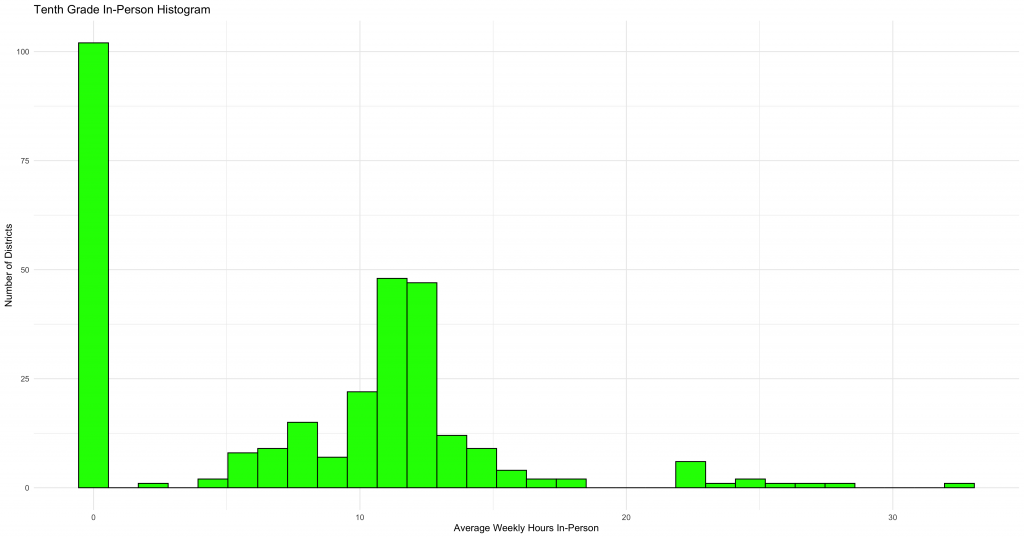By Stella Lorence
Boston University News Service
As the debate surrounding school reopenings reaches a boiling point, state data reveals elementary school students received three to four more hours of in-person instruction than middle and high school students this past fall.
The state Department of Elementary and Secondary Education conducted a survey in November across all districts for grades one, four, seven and ten, recording the average weekly hours of “student learning time” across three categories: in-person, synchronous remote and asynchronous remote.
The data revealed that first grade students were receiving slightly over 11 hours of in-person learning weekly, while seventh grade and tenth grade students received around eight hours per week on average.

At the same time, nearly eight percent of first grade school districts were conducting only in-person learning, compared to two percent of seventh grade districts and 0.7% of tenth grade districts.
The results came months after Department Commissioner Jeffrey Riley released a memo detailing the goal of bringing back in-person classes for as many students as possible last fall. Based on the department’s survey data, they largely succeeded; only 80% of first grade districts, and about 70% of seventh and tenth grade districts, were offering at least half an hour of in-person learning per week.
The Collegiate Charter School of Lowell’s district had the highest average in-person weekly hours for both first grade and seventh grade, at 35 hours. For tenth grade, Mystic Valley Regional Charter School district had the most, at 32.5 hours.
Overall, a higher percentage of charter school districts reported no in-person hours when compared to non-charter districts across first, seventh and tenth grade.
As many schools near the one-year mark of closures, the Centers for Disease Control and Prevention released a “toolkit” for COVID-19 mitigation in K-12 schools last month, providing a list of considerations for administrators to incorporate into their reopening plans.

The CDC’s updated science brief on transmission in schools claims that “based on the data available, in-person learning in schools has not been associated with substantial community transmission.”
Teachers unions across the country have played a significant role in blocking and delaying school reopenings, citing concerns for teachers’ safety and pushing for full vaccination before any returns to the classroom.
However, there has been pushback. San Francisco sued its own school board and district in an attempt to return kids to school before reaching an agreement that may bring some students back in person.
The CDC reported that, although overall transmission in schools tends to be lower than community transmission rates when proper mitigation strategies are put in place, when transmission does occur, it’s most commonly between staff members.
An early release of a CDC study of a school district in Georgia, where nine clusters of COVID-19 cases occurred, underscored the role of staff members in spreading the virus, especially when proper mitigation strategies have not been implemented.
The latest Massachusetts data from the Department of Elementary and Secondary Education show 373 positive COVID-19 cases among students between Feb. 11 and Feb. 24, out of an estimated 450,000 students attending some form of in-person or hybrid school. During the same period, 209 out of an estimated 75,000 staff members also tested positive.





